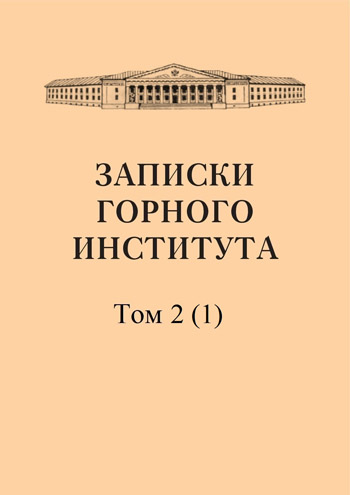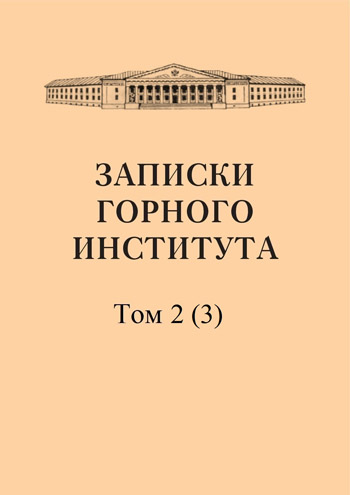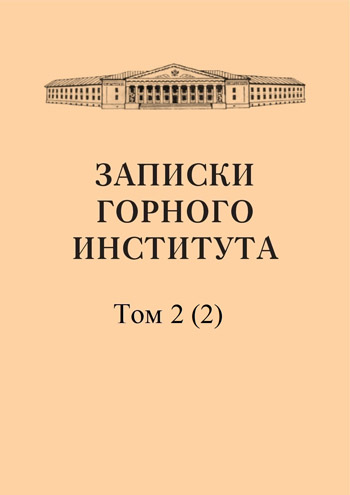-
Date submitted1909-06-13
-
Date accepted1909-08-08
-
Date published1909-12-01
On the issue of rock resistance during blast-holes spurring
- Authors:
- N. S. Uspenskii
The study should give for each rock or its characteristic difference a constant, precisely defined figure, expressing its relationship to spurring of holes adopted in this case. The most desirable would be to obtain figures that, depending entirely on the petrographic nature of the rocks being studied, would, on the other hand, be completely independent of such factors as the force of the drill impact, the diameter of the drill, the angle of its sharpening, the angle of rotation of the drill, etc. In the case when it is impossible to exclude the influence of all these factors, the study must give figures that depend only on some of them, and in this latter case, all the studied rocks must be compared in exactly the same conditions. Figures of the first kind could then be called absolute, and of the second - only relative.
-
Date submitted1909-06-20
-
Date accepted1909-08-21
-
Date published1909-12-01
Index of laws relating to prospecting, exploration and acquisition of rights to develop mineral deposits
- Authors:
- A. A. Shtof
The Council of the Mining Institute of Empress Catherine II, which proposed to establish an additional course in exploration at the institute for mining engineers, could not help but draw attention to the fact that persons engaged in this matter for practical purposes need a detailed familiarization with our laws relating to prospecting, exploration and obtaining the right to develop a mineral deposit. In order to facilitate a detailed acquaintance with the above part of our mining laws, the Council of the Mining Institute decided to publish this “Index”, which would give the researcher and practitioner a guide for reference (see article).
-
Date submitted1909-06-02
-
Date accepted1909-08-19
-
Date published1909-12-01
Genesis of augite garnet rocks according to new data
- Authors:
- E. S. Fedorov
- E. D. Stratanovich
The structure of such parts of the earth’s crust as the modern Ural Ridge is something so complex that no human imagination is able to comprehend it in all details, and any attempt in this direction comes down to a more or less detailed diagram. But especially grandiose mining areas hid within themselves not only this complexity of structure, but also so many subsequent changes and transformations that even a schematic representation of the processes taking place there encounters barely surmountable difficulties. It is enough to point out the intense activity of metamorphosis and weathering to note these features. See the results of the study in the article.
-
Date submitted1909-06-07
-
Date accepted1909-08-05
-
Date published1909-12-01
On the first proof of Gauss's fundamental theorem of algebra and one proof by Cauchy
- Authors:
- M. I. Akimov
A detailed description of the first proof of Gauss's fundamental theorem and Cauchy's proof is given (see article).
-
Date submitted1909-06-30
-
Date accepted1909-08-24
-
Date published1909-12-01
A complete quadrilateral in crystallography and a graphical method for finding complex indices
- Authors:
- Ye. S. Fedorov
Since in general, to define a complex, four faces are necessary and sufficient, it is clear that with three given points, the vertices of any triangle, their poles constitute, further development of the complex is impossible, and it is absolutely necessary to know the position of some other fourth face. In general, the choice of such depends on our desire, and I will consider the case when these four points form the vertices of two adjacent triangles that have a common side.
-
Date submitted1909-06-09
-
Date accepted1909-08-18
-
Date published1909-12-01
One of the essential numerical laws of the geometric network of shape development
- Authors:
- Ye. S. Fedorov
A network for the hypohexagonal type was established and it was shown that the numerical law of the development of forms is essentially the same for this network, although now the faces are expressed by symbols not of three, but of four numbers; from these four you can always choose three, including the necessary the first number, which will be completely identical to the numbers of the first network. But even if we do not make such a selection, but limit ourselves to three numbers, of which one is in first place, and we choose the other two arbitrarily (that is, the second with the third , or the second with the fourth, or finally the third with the fourth), then the law in question here will still remain valid. Of particular importance is the distribution of even and odd numbers. This law is that of the seven symbols relating to any elementary triangle of the network, one certainly encloses three (that is, all), three encloses two, and three encloses one odd number; all other numbers of symbols are even.
-
Date submitted1909-06-13
-
Date accepted1909-08-14
-
Date published1909-12-01
Tetrahedral geometric network and its development along five points
- Authors:
- Ye. S. Fedorov
There is nothing more natural than to generalize the conclusions of the previous note relating to three-digit numbers or a triangular geometric network to numbers of higher significance and, above all, to four-digit numbers, and the result is a tetrahedral network. Such a network of numbers has found its application for the chemical tetrahedron in petrography. Reflecting on the mathematical foundations of the construction of a triangular network, we will find that the main theorems remain valid for this network with a corresponding complication of the constructions themselves. This complication lies in the fact that the total number of points associated with one elementary tetrahedron (more precisely, a sphenoid) of any period no longer 7(3 + 3 + 1), but 15: four at the vertices, six midpoints of the edges, four midpoints of the faces and one midpoint of the tetrahedron itself.
-
Date submitted1909-06-07
-
Date accepted1909-08-19
-
Date published1909-12-01
Vesuvian from the Karmankul cordon
- Authors:
- A. A. Kashinskii
Last summer I managed to collect a small amount of material on the mineralogy of the surroundings of the Karmankul cordon, located on the left bank of the Кiver M. Irimel about 45 versts to SW from Miass station. Along the right bank of the River Irimel there is a series of large pits, formerly mined, but now abandoned for the extraction of iron ore; on the left bank there are only small survey pits. In the dumps of previously mined pits, it was possible to find, in addition to chromium iron ore and rhodochrome, very poor kemmererites and small but well-formed crystals of uvarovite; both of them are like crusts on chromium iron ore. In the survey pits (on the left bank of the Irimel River), in addition to chromium iron ore, small crystals of vesuvian and magnetic iron ore were also found.


